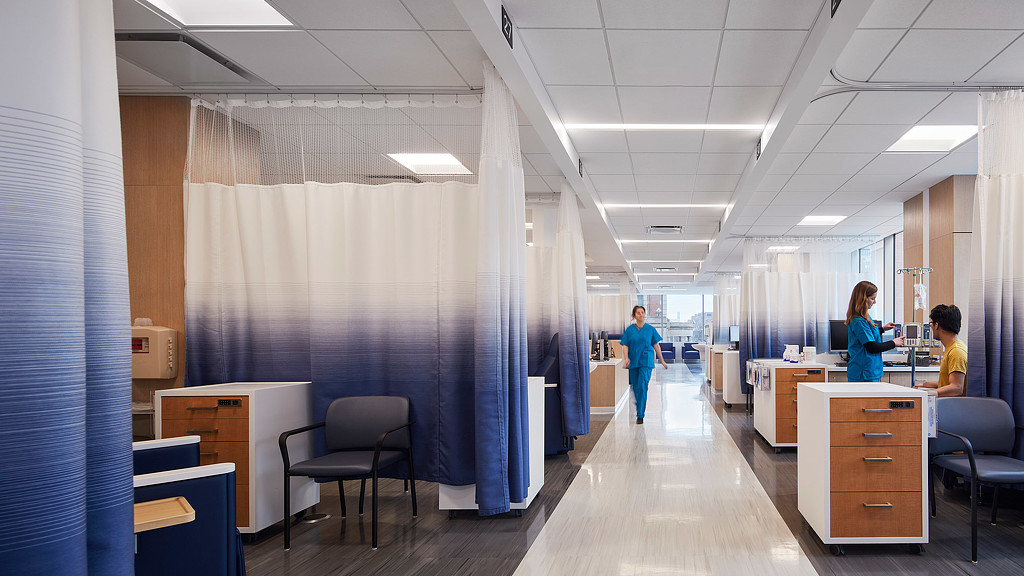Why Is the Outlook on Telehealth So Complicated?
December 22, 2021 | By Nicholas Watkins, Ph.D. and Kyle Sellers
Telehealth was at the forefront of healthcare consults during the pandemic, but we’re not hearing enough on lessons learned. Maybe that’s because the results are mixed, and at times, still playing out as we wait for any regulatory and policy shifts. Less than one percent of ambulatory consults were virtual before the pandemic. On the other hand, nearly 1 in 3 similar visits were handled virtually in the first months of COVID-19. Without the ability to see their care providers in person, outpatient consumers leaned on telehealth out of necessity.
Crucial regulatory changes reinforced the use of telehealth . The ability to interact with an out-of-state doctor—and have it covered by insurance—helped to manage regional staff shortages. Case in point, , Governor Kathy Hochul signed an executive order continuing New York’s policy that leverages out-of-state providers. But will a policy like this continue when states are not in a crisis?
Not surprisingly, our nationally representative Outpatient EXI survey (O-EXI) results show that many outpatient consumers reported that they scheduled virtual visits to replace what was supposed to be in-person consultations and maintain safety from COVID-19. Nearly half of those in our survey who had a telehealth visit say the experience was poor. Many report they would prefer not to continue telehealth in the future.
We have crucial questions that need answering but the experiment is still unfolding.
At this time, the United States still dominates over half the market. While many world regions are increasing their virtual capabilities, we can now look to the U.S. for usage and efficacy—both from the consumer and provider perspectives. Right now, telehealth may not be for everyone. But the economic forecasts add up to jaw-dropping numbers. The global telehealth market is expected to rise tenfold over the next decade.
So, who is the key market for telehealth?
Overall, 16% of our OEXI sample experienced a virtual visit. But “who” experienced a virtual visit varied. Those who work from home, especially young workers, are more likely to have a positive telehealth experience. And women who worked from home benefited the most. Those who are younger approach healthcare with the expectation of convenience, balancing these needs with other priorities. Further, the group who felt that COVID-19 had the largest impact on their daily life were more likely to report positive virtual visits. This comfort of having an additional option to receive healthcare, particularly among men with behavioral health needs, was significantly related to having a positive virtual visit.
We must also consider telehealth as a potential answer to expanding health access. COVID-19 has undoubtedly been a public health disaster—Johns Hopkins’ latest figures show that there have been over 46 million cases and nearly 750,000 deaths in the United States alone—but the effects are far beyond the physical. Our OEXI survey results show the additional blows to wellbeing: anxiety and depression, PTSD, and financial stress worsened during the COVID-19 pandemic. To grapple with how the virtual can supplement traditional in-person consultations, we explore critical questions regarding what we’ve learned during COVID-19 from the O-EXI.
Does virtual health increase touchpoints?
Our research shows that virtual visits are not likely to impact the amount of care received. Other studies have found this relationship, too. By examining over 10.5 million ambulatory visits within a single regional healthcare network, one study found that virtual care did not increase the frequency of visits. In-person visits are expected to make a significant rebound, while virtual visits are perceived to be less efficient and less supportive of health needs. However, past research has found that telemedicine can improve health outcomes such as mortality rates and length of stay. What does this mean? Telehealth may be strategically used for particular services, but there are not yet signs that it will increase touchpoints.
There’s a degree of variability in which services translate to the virtual consult—almost all behavioral health consults were virtual, but less than 1 in 10 ophthalmology consults were. Behavioral health may be another key service for virtual care. Individuals are more aversive to virtual health consultations for conditions such as hypertension, high cholesterol, and cancer. Privacy may also be an issue, too. And because privacy issues arise in registration, some individuals may feel more comfortable having a virtual visit.
How can virtual visits feel “natural?”
A positive virtual visit indicates positive feelings at different scales—toward the visit, comparisons with in-person visits, and more broadly, toward the virtual health itself. But at the individual level, virtual visits can feel, frankly, uncomfortable. Consumers indicate that their care providers’ actions can make or break the virtual visit. Consumers who say they felt comfortable during their visit, expressed what they wanted to share, felt that they weren’t rushed, and were more likely to have a positive virtual visit. Importantly, are we still acclimating to this new medium, or are intangible elements of the in-person visit hard to shake? For example, consumers reported that doctors who had their diplomas, system-brand, and other aspects of their setting during the telehealth consult on display conducted better consults. These nonverbals may be necessary to supplement the lost time and steps consumers usually go through when establishing trust.
Digital integration is already a boon to other areas of the consumer journey. For instance, those who use mobile apps, take digital notes during their consult are more knowledgeable and proactive in their health. But doctors also know that their patients are facing issues, too. One study finds that doctors say that their patients’ technology issues are a big challenge, alongside ongoing issues with reimbursements. Our O-EXI survey findings corroborate this challenge from the consumer’s perspective: the ability to see the physician, eye contact, and a feeling of being seen, are drivers of a quality virtual experience. We found that the medium matters, too. Smartphone consults reported the best experiences, as measured by the quality of physician interactions, visibility, and ease of using virtual technology.
Design and digital solutions that bolster authentic, trustworthy and empathic relations over telehealth pose a unique challenge. In our O-EXI survey data, a “natural feeling” during a virtual visit means the physician not only feels prepared for the engagement but that the patient also feels as if the physician got to know them as a person. This sense of “naturalness” may be elusive, but it could be even more important for certain people. Black men who reported a positive natural feeling during their virtual visit were more likely to trust the future of healthcare. Women who work from home were also more likely to report a positive virtual visit experience if they felt their physician got to know them as a person.
Can telehealth help the underserved?
Before the COVID-19 pandemic, virtual visits were not treated the same way as in-person consultations. Due to safety concerns, policies ensured doctors were paid the same rate for virtual visits as in-person visits. And states across the U.S. are considering whether to consider this policy. Historically, because doctors were not paid the same, virtual offerings were limited. But virtual care also stands to benefit those who are underserved, disenfranchised, or have complex health needs.
If trust is related to access, and access is related to affordability, we can’t overlook how virtual visits stand to benefit those who need cost savings, or some who don’t have access to care at all. Hispanic men who could save money because of virtual care reported greater trust in the future of healthcare. Virtual visits are generally more affordable, and those who were laid off, furloughed, or faced financial insecurity during the pandemic benefited from virtual visit access. Those with the most complicated healthcare needs, such as those requiring many continuous touchpoints to manage chronic conditions, also benefit from healthcare management that includes virtual visits.
We also have to be aware that virtual care may open doors, but close doors, too. While those without insurance use the emergency department at similar rates to those with private insurance, they use other outpatient services significantly less. If they are able to increase touchpoints by virtual care, but are then recommended an in-person visit that they can’t afford—what is the equitable solution?
Final thoughts
We envision virtual health as a supplement rather than a total solution. We know that virtual visits’ approach and efficacy are not yet perfect, but we also know that many stand to benefit from its implementation in the healthcare service-scape. At its best, virtual health will lead to seamless experiences with healthcare. At its worst, it can become a redundant or wasteful step that further fragments an already fragmented US healthcare system. Ultimately, a hybrid-technology approach may be best for many consumers. As the conversation continues on virtual health, we have to keep in mind how it relates to broader questions facing healthcare’s value, today—developing great provider-consumer relationships, empowering consumers with the best options, and creating an equitable healthcare paradigm. “Will cloud-print replace facility footprint?” is not the right question. Whether any of it contributes measurable value to consumers, is a better start.
Click here to explore more insights from the full Gensler U.S. Outpatient Experience Index report.
For media inquiries, email .

